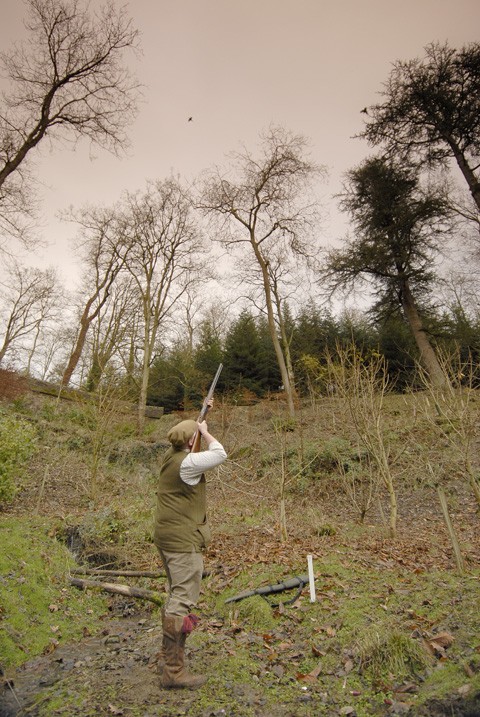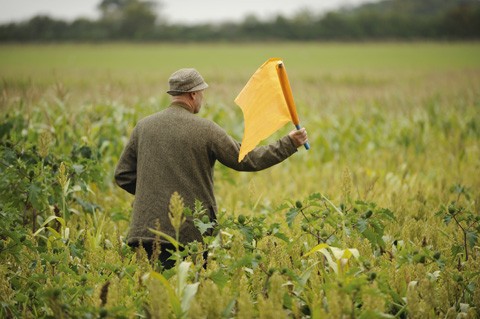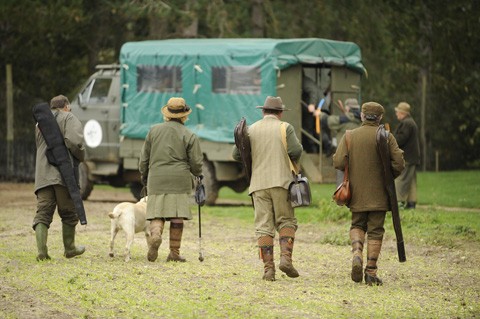How to improve your game shoot

Running a game shoot can be one of the most pleasurable activities, but when it goes wrong it can be the worst. Presenting a front of serenity when everything is churning inside is not something anyone in any profession would wish for. Quite often the problems are specific to the day, related to either the weather or environmental factors, but every game shoot owner’s nightmare is when something goes structurally wrong and affects the whole season, because that brings a whole season’s worth of stress.
Dealing with disease
Possibly the worst problems are related to rearing and come in two forms. Either the birds die on the rearing field so the game shoot is left with fewer to put out, or the birds let out are not healthy and develop problems when in the pens or, worst case scenario, when shooting has started. The former is the lesser of the two evils because it is known in advance of the season and allows time for a response, which usually involves buying replacements from another game farm.
The first year we ran our game shoot commercially, our partridges arrived from the game farmer dying of hexamita, and his assurance that he would “see us right” with the final batch was only honoured in the breach (with hindsight it was obvious these would be no better than the rest). We made panicky phone calls around the country to try to source replacements that eventually came from Scotland. Scarred by this experience, we resolved to rear all our day-olds on the game shoot from then on. This hasn’t been plain sailing, but means that we know the history of the birds before we put them out – and if necessary can delay release until they are completely right.
We have also experienced the nightmare scenario of a disease outbreak after shooting has started. The big problem here is that most drugs have a 28-day withdrawal period that prohibits the birds being sold into the food chain and hence, since we all abide by the Code of Good Shooting, being shot.
On the first occasion we had to let the outbreak run its course, which meant an agonising fortnight while we watched it work its way through the game shoot. Then we came out the other side with a healthy but reduced population. On the second occasion it was isolated to one area so we treated the birds and didn’t shoot those drives until the drug withdrawal period was over. Because it was in the early season we could re-work our shoot days to accommodate the inconvenience.
I know a number of game shoots that have had been badly affected in similar ways. One neighbour had to stop shooting in October; others have continued through. It would be naive to assume that these game shoots haven’t been buying in birds mid-season to replace the losses simply because the commercial implications are often too catastrophic not to. We all know that this is wrong and jeopardises the case for releasing birds, so guns buying days on these game shoots need to make it clear that they disapprove.
 Skilful beating on your game shoot won’t be enough to soothe the headache of over-populated crops showing too many birds too early in the season.
Skilful beating on your game shoot won’t be enough to soothe the headache of over-populated crops showing too many birds too early in the season.
Managing drives when game crops fail
Crop failure is less traumatic but still a major problem. Again, it can manifest itself in various levels of severity from complete loss to patchiness or not lasting long enough. The usual response is to vary the releasing policy to reduce the number of birds in the affected areas and hope putting more in the better crops doesn’t compromise releasing densities.
The challenge is how to manage the drives: often with partridge we rely on the first drives of the day to fill up the later ones. If the early drives are light on birds – because they don’t like the game crop, for example – it can push the day off-balance and put too much reliance on drives that aren’t capable of showing enough birds.
A major problem with having lots of birds in a crop that isn’t big enough is that they flush too readily. At our game shoot we know which drives we can rely on to show quarry in presentable numbers – to lose one of those would be a major headache. But at least this isn’t going to be a surprise on shoot day, so it might be possible to cleverly re-order your drives to accommodate the defect or possibly include an extra drive to maximise the bag.
Fix the drive before it stops working
Whether it’s the signature drive no longer living up to its reputation, or a smaller drive not holding enough birds, this is a management headache because it is hard to rectify during the season.
The easier situation to deal with is when wooded areas change and clearly affect birds’ behaviour. However, it is only easy because the cause is identifiable; the solution will often have to wait until the end of the season. One of our main partridge drives is based around a young wood with a moderate amount of maize around it, but we relied on the birds using the long grass among the trees as habitat as much as the maize. This year it was clear that they no longer used the wood because the trees had grown up, so they were concentrating in the maize which wasn’t sufficiently large for the increased numbers, leading to some spectacular flushes. We coped through skilful beating and recognising that we could push these large packs to the next drives and bring them back over the rest of the morning in smaller numbers. But it was a wake-up call – we have to anticipate these things rather than letting them show themselves when it’s too late.
Behaviour of birds
More problematic is when the behaviour of the birds changes, so that they either stop using some woods or no longer fly as well out of them. You need a pheasant psychologist to understand such behaviour, and while the best keepers come pretty close, it is hard to know for sure what is going through a pheasant’s brain. The first solution is to consider how, if at all, the wood has changed and perhaps create new flushing points or clearing tracks. This can be done during the season and may have the desired effect. At least it provides the feeling of doing something to redress the problem.
Another possible solution is to change the strain of birds, but this will take a season. And a word of caution: a friend bought a new farm and released an exotic, high-flying strain that had done well on his old farm, but for some reason it was a disaster. He only saw the problem when his neighbours informed him that his birds had strayed onto their game shoots and were flying far more badly than theirs. When I came to shoot in mid-January he had declared war on them – informing all guns everything had to be shot, providing it was safe. This case demonstrates the principle that in a situation where the drives are letting you down because of game crop failure, bird behaviour or woodland changes, the only real remedy is to be upfront with the guns and explain what has happened and what you are doing to work around it. Most shooting men are keen to understand the mechanics of running a game shoot and may well sympathise with the problem if it is outlined to them, and if they can see the manager is doing sensible things to overcome issues not of his making.
 A game shoot dependent on buses should ensure it is in good working order, and have a quickly deployable contingency plan if it breaks down.
A game shoot dependent on buses should ensure it is in good working order, and have a quickly deployable contingency plan if it breaks down.
Problems with machinery and man
Problem areas that guns do not like to hear about relate to mechanical issues and personnel – probably because these remind them of the mundane aspects of everyday life that they want to leave behind. While guns will be amused by the gun bus catching fire (yes, it has happened) they absolutely don’t want it to affect their sport. Punctures, getting stuck or getting lost are in the same category and the competent game shoot owner should have contingency plans, such as having farm staff or keepers on hand who can be deployed to sort out the situation.
Early last season our new gun bus broke down on a busy stretch of dual carriageway; within 10 minutes we had two replacements and a tow tractor on the scene and the game shoot carried on. On another occasion I got the gun bus stuck in a badger hole and by the time the guns had walked a short distance and finished the drive, we had enlisted the help of the farm’s largest tractor and a spare beater to drive it.
I’d like to think we got some respect for sorting out each situation efficiently and with minimum fuss each time. At least with mechanical problems the solution is simple – throw money at it. Compared with the other problems one has to deal with, it is a relief to find one with a ready solution. Another issue that can crop up unexpectedly surrounds the thorny subject of personnel. This one can be tricky but has to be resolved behind closed doors. I haven’t experienced keepers leaving mid-season but I know that my response would be to galvanise the other keepers to cover the gap, ask more involved beaters to help out where possible, perhaps advertise for temporary help and ultimately get stuck in myself. There are enough people interested in
shooting who would like the opportunity to do a bit, especially if they are already involved in the game shoot. During the first year of our commercial game shoot we employed a single keeper who fell ill for a period. His best friend, who had long been his unpaid helper in return for some shooting perks, stepped in to help, despite being employed full-time. When I had a chance to repay the favour some years later, I made sure I did with interest.
Honesty is the best policy
While it’s true that some problems can be dealt with behind closed doors, any that materially affect the quality of the shooting and therefore have the potential to damage the game shoot’s reputation need to be dealt with more openly. The best way to cope is to be upfront with the guns in advance, so expectations are managed and to offer financial compensation where appropriate. Nothing will ruin a game shoot’s reputation faster than treating guns badly in these circumstances.
Conversely, most guns are decent people who don’t want to see an honest game shoot owner shut down through no fault of his own, so may well be prepared to re-book for next year and speak gently of the problems to friends, thus doing much to help the game shoot survive.
For more features click here








